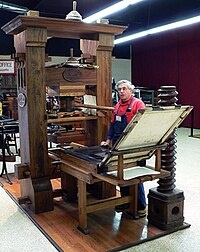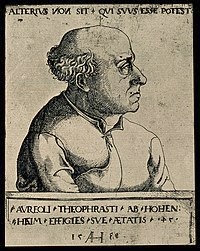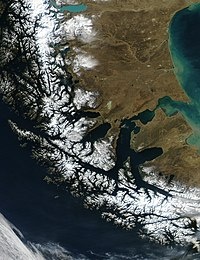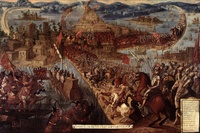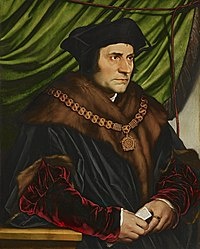-
Use Cases
-
Resources
-
Pricing
Art and Architecture
Filippo Brunelleschi completes the dome of Florence Cathedral
1436
% complete
Filippo Brunelleschi completes the dome of Florence Cathedral in 1436. The dome, which is the largest brick dome ever constructed, is considered a masterpiece of Renaissance architecture. Brunelleschi's innovative design and construction techniques, including the use of ribbed vaults and a double-shell structure, allowed for the dome to be built without the need for scaffolding. The completion of the dome marked a major achievement in engineering and solidified Brunelleschi's reputation as a leading architect of the Renaissance.
Image source: Florence Cathedral
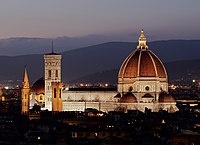
Donatello sculpts "David"
1440
% complete
Donatello sculpts "David" (1440)
Sandro Botticelli paints "Primavera"
1482
% complete
Sandro Botticelli paints "Primavera" (1482)
Botticelli paints "The Birth of Venus"
1485
% complete
Sandro Botticelli paints "The Birth of Venus", one of his most famous paintings. The painting depicts the birth of the goddess Venus, according to Greek mythology. It is believed to have been commissioned by the Medici family and was completed around 1485. The painting is now housed in the Uffizi Gallery in Florence, Italy.
Leonardo da Vinci paints the Mona Lisa
1503 - 1506
% complete
Leonardo da Vinci paints the Mona Lisa, which is a portrait of Lisa Gherardini, a woman from Florence, Italy. It is believed to have been painted between 1503 and 1506 during the High Renaissance period. The painting is renowned for its realistic and enigmatic portrayal, as well as its use of sfumato technique.
Image source: Isleworth Mona Lisa
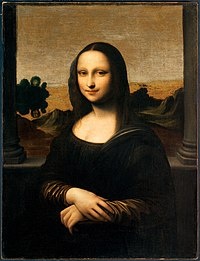
Raphael paints "The School of Athens"
1509
% complete
Raphael paints "The School of Athens" in 1509. "The School of Athens" is a famous fresco located in the Apostolic Palace in Vatican City. It is considered one of Raphael's masterpieces and a quintessential example of Renaissance art. The fresco depicts a grand gathering of philosophers and scholars from classical antiquity, with Plato and Aristotle at the center. The painting is known for its harmonious composition, intricate details, and accurate portrayal of classical architecture and figures.
Image source: Art patronage of Julius II
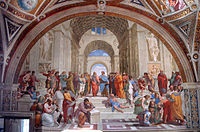
Michelangelo completes the Sistine Chapel ceiling
1512
% complete
Michelangelo completes the Sistine Chapel ceiling in 1512. The Sistine Chapel is located in Vatican City and is known for its beautiful frescoes. Michelangelo spent four years painting the ceiling, depicting scenes from the Old Testament. The centerpiece of the ceiling is the famous fresco 'The Creation of Adam', which shows God reaching out to touch Adam's finger.
Image source: Sistine Chapel ceiling
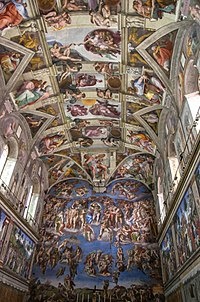
Titian paints "Venus of Urbino"
1538
% complete
Titian paints "Venus of Urbino" in 1538. The painting depicts a reclining nude woman, identified as Venus, in a domestic setting. It is believed to have been commissioned by the Duke of Urbino as a gift for his youthful new bride. The painting is known for its sensuality and the masterful depiction of the female form. It has since become one of Titian's most famous works and a symbol of the Renaissance period.
Image source: Themes in Italian Renaissance painting
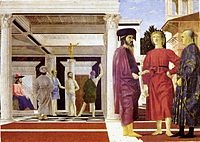
Scientific Discoveries
Gutenberg invents the printing press
1440
% complete
Paracelsus pioneers the use of chemicals in medicine
1526
% complete
Copernicus proposes the heliocentric model
1543
% complete
Nicolaus Copernicus proposes the heliocentric model, which states that the Earth and other planets revolve around the sun. This theory challenges the prevailing geocentric model, which places Earth at the center of the universe. Copernicus' book, 'De revolutionibus orbium coelestium,' is published in 1543.
Image source: Copernican heliocentrism
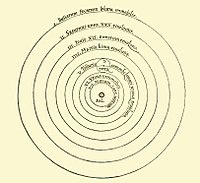
Andreas Vesalius publishes "On the Fabric of the Human Body"
1543
% complete
Andreas Vesalius publishes 'On the Fabric of the Human Body'. This book, also known as 'De humani corporis fabrica', revolutionized the field of anatomy with its detailed illustrations and accurate descriptions of the human body. It was published in 1543 and is considered one of the most important works of the Renaissance period.
Tycho Brahe observes a supernova
1572
% complete
Tycho Brahe, a Danish astronomer, observes a supernova on November 11, 1572. This event was significant because it challenged the existing belief that the heavens were unchanging and perfect. Tycho's observations provided evidence for the idea that the universe was dynamic and constantly changing. This observation also helped to establish Tycho Brahe as a respected astronomer and contributed to the development of modern astronomy.
Image source: Tycho Brahe
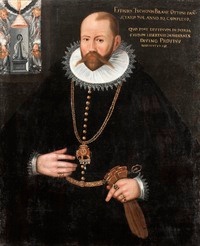
Galileo Galilei improves the telescope
1609
% complete
In 1609, Galileo Galilei made significant improvements to the telescope, increasing its magnification and allowing for more detailed observations of celestial bodies. This breakthrough in optics revolutionized astronomy and paved the way for discoveries such as the moons of Jupiter and the phases of Venus.
Image source: Galileo Galilei

Johannes Kepler formulates laws of planetary motion
1609
% complete
Johannes Kepler formulates three laws of planetary motion in 1609. The laws describe the motion of planets around the sun. The first law states that planets move in elliptical orbits with the sun at one of the foci. The second law, also known as the law of equal areas, states that a line connecting a planet to the sun sweeps out equal areas in equal time intervals. The third law, also known as the harmonic law, states that the square of the period of revolution of a planet is proportional to the cube of its average distance from the sun.
Exploration and Voyages
Christopher Columbus reaches the Americas
1492
% complete
Christopher Columbus reaches the Americas in 1492, marking the beginning of European exploration and colonization of the New World. Columbus, sailing under the sponsorship of the Catholic Monarchs of Spain, landed in the Bahamas on October 12, 1492. His voyages across the Atlantic Ocean opened up new trade routes and paved the way for future exploration and colonization by European powers.
Vasco da Gama sails around the Cape of Good Hope
1497
% complete
Vasco da Gama, a Portuguese explorer, sails around the Cape of Good Hope, successfully reaching India. This voyage opens up a direct sea route from Europe to Asia, bypassing the Ottoman Empire and the Mediterranean Sea.
Image source: Vasco da Gama
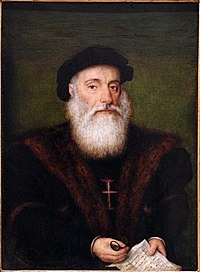
Amerigo Vespucci explores the South American coast
1499
% complete
Amerigo Vespucci, an Italian explorer, embarks on a journey to explore the South American coast, leading to the discovery of the continent. He starts his exploration in 1499.
Magellan's expedition circumnavigates the globe
1519 - 1522
% complete
Ferdinand Magellan's expedition set sail from Spain in 1519 with five ships and a crew of about 270 men. They sailed across the Atlantic Ocean, crossed the Strait of Magellan at the southern tip of South America, and entered the Pacific Ocean. After months of sailing, they reached the Philippines in 1521, where Magellan was killed in a battle with indigenous tribes. The remaining crew continued the voyage and eventually reached Spain in 1522, becoming the first expedition to circumnavigate the globe.
Image source: Magellan expedition
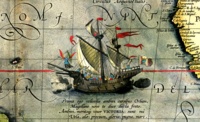
Ferdinand Magellan discovers the Strait of Magellan
1520
% complete
Hernán Cortés conquers the Aztec Empire
1521
% complete
Francis Drake circumnavigates the world
1577 - 1580
% complete
Francis Drake circumnavigates the world from 1577 to 1580. He set sail on December 13, 1577, with a fleet of five ships. The expedition was funded by English investors with the goal of capturing Spanish ships and treasure. They sailed across the Atlantic Ocean, through the Strait of Magellan, and along the coast of South America, attacking Spanish settlements and capturing valuable goods. Drake claimed various territories for England, including California in present-day United States. After crossing the Pacific Ocean, they reached the Moluccas, a group of islands in present-day Indonesia, where they acquired valuable spices. The expedition continued westward across the Indian Ocean and around the Cape of Good Hope, finally arriving back in England on September 26, 1580. Drake's successful circumnavigation of the world brought him fame and fortune, and he was hailed as a national hero in England. His voyage also marked a significant milestone in the development of England as a naval power and in the expansion of English influence around the globe.
Image source: Francis Drake's circumnavigation
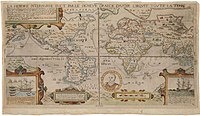
Literature and Philosophy
Erasmus publishes "In Praise of Folly"
1511
% complete
Erasmus publishes 'In Praise of Folly' in 1511. This satirical work criticizes various aspects of society and the church, using wit and humor to point out the follies of human behavior. It became one of the most famous works of the Renaissance, challenging traditional beliefs and promoting critical thinking.
Image source: In Praise of Folly
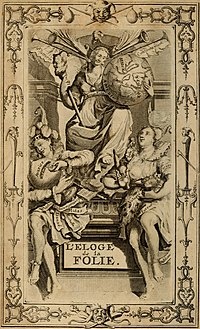
Thomas More's "Utopia" is published
1516
% complete
Baldassare Castiglione writes "The Book of the Courtier"
1528
% complete
Baldassare Castiglione writes "The Book of the Courtier" (1528).
Image source: The Book of the Courtier
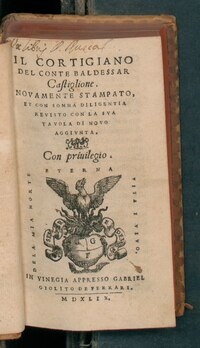
Niccolò Machiavelli publishes "The Prince"
1532
% complete
Niccolò Machiavelli publishes "The Prince", a political treatise that explores the acquisition, maintenance, and exercise of political power. It is written as a guide for rulers and is known for its controversial and pragmatic approach. The book is published in 1532, five years after Machiavelli's death.
John Calvin publishes "Institutes of the Christian Religion"
1536
% complete
John Calvin publishes "Institutes of the Christian Religion" (1536).
Image source: Institutes of the Christian Religion
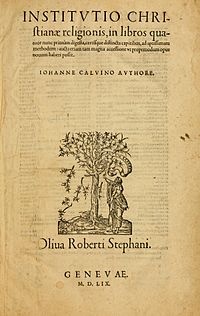
William Shakespeare writes "Romeo and Juliet"
1597
% complete
William Shakespeare writes 'Romeo and Juliet'. It is believed to have been written between 1591-1597, with the earliest known performance in 1597. The play is a tragic love story set in Verona, Italy, and follows the lives of two young lovers, Romeo Montague and Juliet Capulet, who belong to feuding families.
Miguel de Cervantes publishes "Don Quixote"
1605
% complete
Miguel de Cervantes publishes 'Don Quixote' in 1605. It is considered one of the greatest novels ever written and is a landmark work of Spanish literature.
Political and Historical Developments
Martin Luther's Ninety-Five Theses
1517
% complete
Martin Luther's Ninety-Five Theses, a list of propositions for an academic disputation, was posted on the door of the Castle Church in Wittenberg, Germany on October 31, 1517. This event is considered the starting point of the Protestant Reformation.
Key Facts
- The Renaissance started in Italy and later spread to the rest of Europe.
- It was characterized by a renewed interest in ancient Greek and Roman culture.
- The invention of the printing press allowed for the dissemination of knowledge and ideas on a broader scale.
- Prominent figures of the Renaissance include Leonardo da Vinci, Michelangelo, and William Shakespeare.
- The Renaissance marked a transition from the medieval period to the modern era.
Source
This Renaissance timeline was generated with the help of AI using information found on the internet.
We strive to make these timelines as accurate as possible, but occasionally inaccurates slip in. If you notice anything amiss, let us know at [email protected] and we'll correct it for future visitors.
Create a timeline like this one for free
Preceden lets you create stunning timelines using AI or manually.
Customize your timeline with one of our low-cost paid plans
Export your timeline, add your own events, edit or remove AI-generated events, and much more
Free
$
0
free forever
No credit card required.
Basic
$
10
/month
billed annually
Cancel anytime.
Pro
$
16
/month
billed annually
Cancel anytime.
Common Questions
Can I cancel anytime?
Yes. You can cancel your subscription from your account page at anytime which will ensure you are not charged again. If you cancel you can still access your subscription for the full time period you paid for.
Will you send an annual renewal reminder?
Yes, we will email you a reminder prior to the annual renewal and will also email you a receipt.
Do you offer refunds?
Yes. You can email us within 15 days of any payment and we will issue you a full refund.
What if I have more questions?
Check out our pricing docs or send us an email anytime: [email protected].
